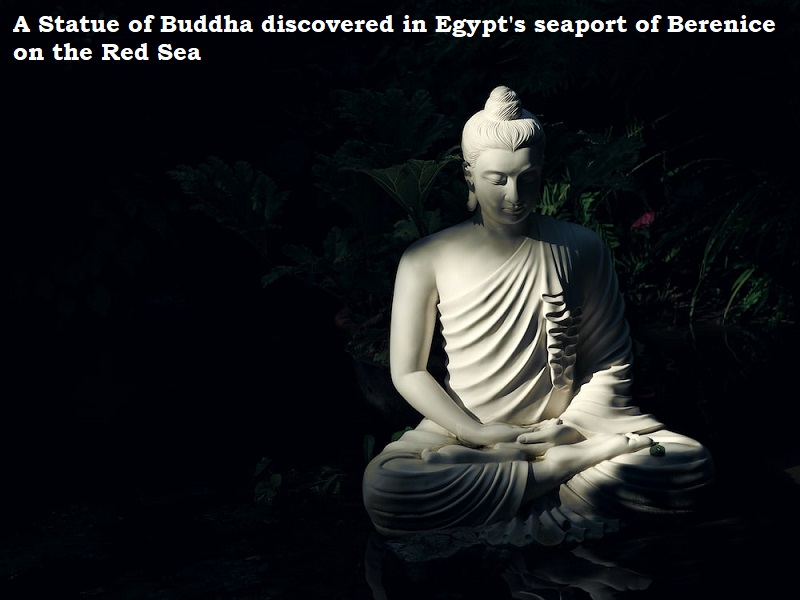
The discovery of a statue of Buddha in Egypt’s seaport of Berenice on the Red Sea has shed light on the trade ties between ancient India and the larger West Asian region, including Egypt. The statue, which was found by a Polish-US mission, dates back to the Roman era and was discovered while digging at an ancient temple in Berenice. The head of Egypt’s supreme antiquities council, Mostafa al-Waziri, stated that the find has “important indications over the presence of trade ties between Egypt and India during the Roman era”. Berenice was one of the largest seaports in Roman-era Egypt and was often the destination for ships from India laden with spices, semi-precious stones, textiles, and ivory.
The Buddha statue is 71 centimeters (28 inches) in height and portrays Buddha with a halo around his head and a lotus flower by his side. Part of its right side and its right leg are missing. Waziri said that the statue’s discovery sheds light on the maritime trade networks between ancient Asian civilizations that prospered on the banks of the Ganges and Indus rivers and those that flourished on both sides of the Nile river.
The discovery of the statue also reveals India’s Buddhist traditions in ancient Egypt. The first pepper exported from an Indian port appeared in Egyptian records around 1200 BC, which was identified from the dried fruits in the nostrils of the mummy of Ramses II. The Greek and Latin inscriptions engraved on the walls of a cave in the Wadi Mineh area located in the eastern desert of Egypt about 700 km south of Cairo testify that Roman traders were travelling regularly to India by the turn of the millennium.
Egypt has recently unveiled many major archaeological discoveries in an attempt to revive its vital tourism industry after years of political unrest and the COVID-19 pandemic. However, critics argue that the flurry of excavations has prioritized finds that grab media attention over hard academic research. The government’s plans to attract 30 million tourists a year by 2028, up from 13 million before the pandemic, include the long-delayed inauguration of the Grand Egyptian Museum at the foot of the pyramids in Giza.

Post Your Comments